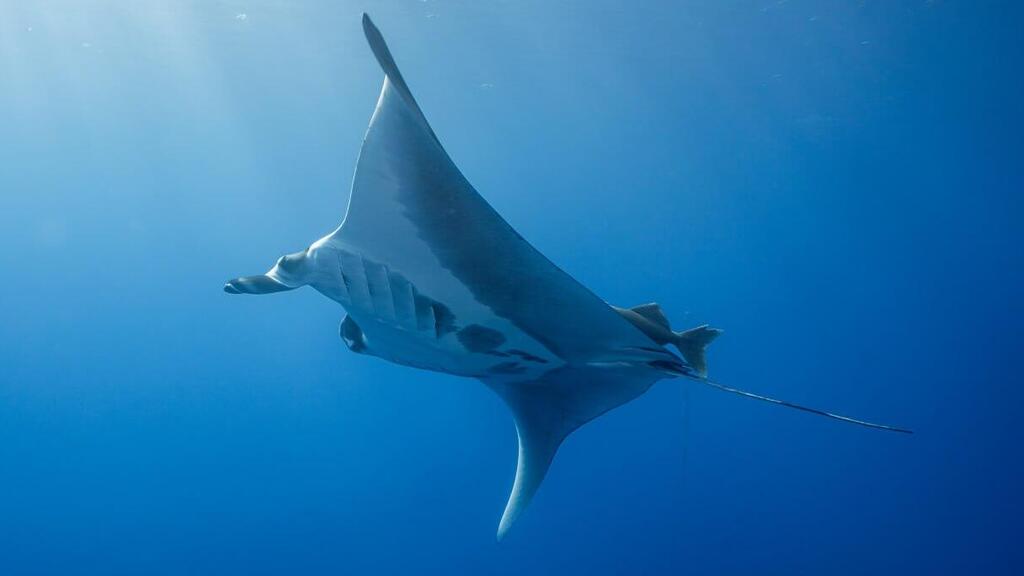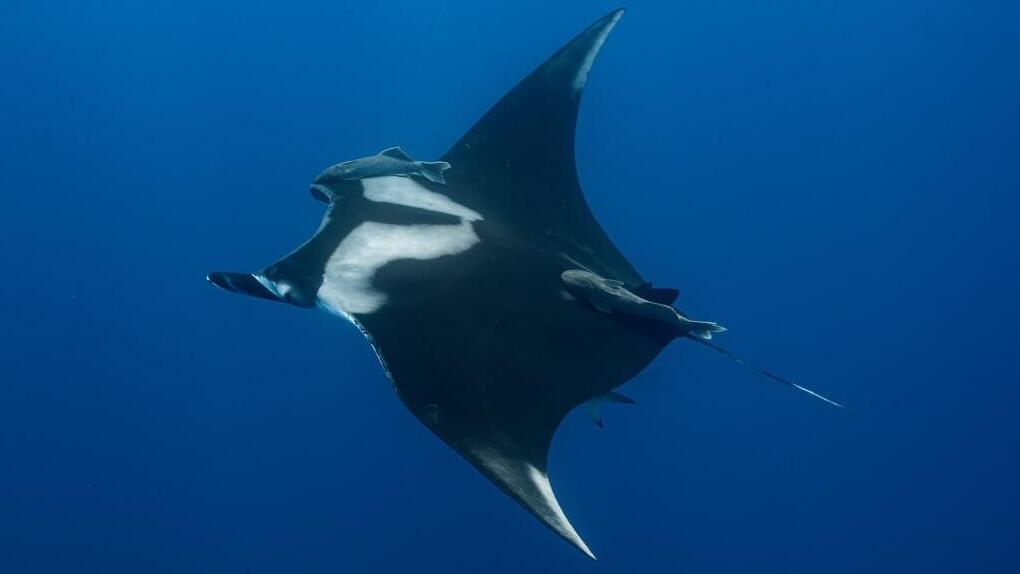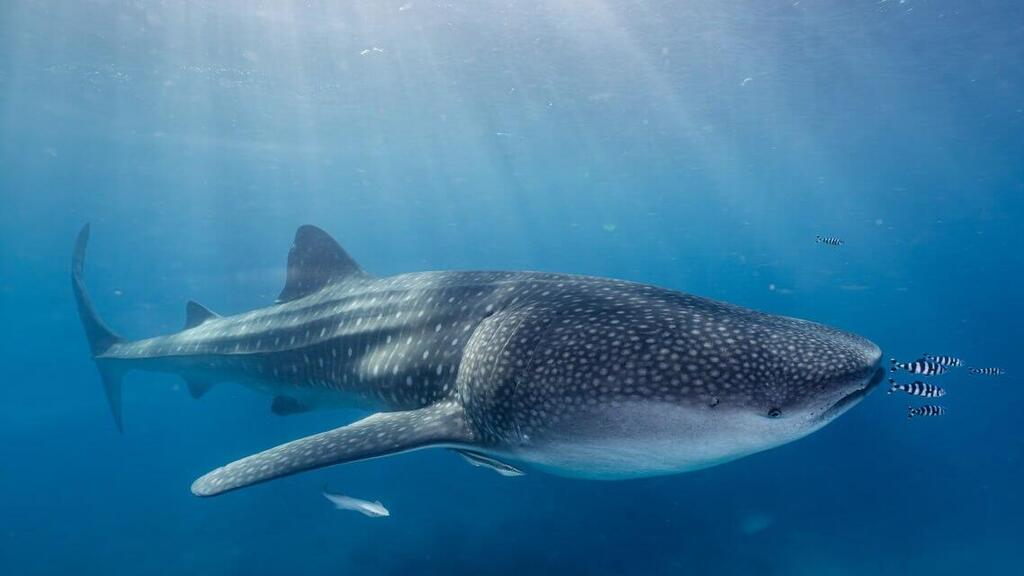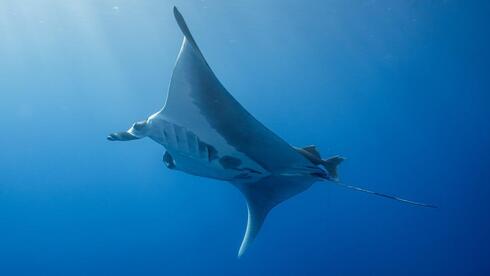In recent weeks, an unusually large number of divers, swimmers and surfers have encountered some of the largest marine animals known to frequent the Gulf of Eilat. At least four giant manta rays and several whale sharks have been documented in the area this month, according to Sharks in Israel, a nonprofit that has been collecting sightings of sharks and rays in Israel for over a decade.
Adding to the excitement, a mobula ray—similar to a manta but of a different species—was recorded in the gulf for only the second time.
“The fishermen thought it was just another manta visiting the bay,” said Dr. Adi Barash, CEO of the nonprofit and a postdoctoral researcher at the Steinhardt Museum of Natural History. “But after a closer look, it turned out to be a mobula, a close relative of the manta. While a few species of mobulas are known to live in the Red Sea, they are extremely rare here.” his marks just the second time a mobula has been documented in the region.
Giant manta ray in the Gulf of Eilat
(Video: Tal Amsalem, Association for the Promotion of Sport Fishing and Conservation of the Gulf of Eilat)


Barash suggested that the sightings may be linked to the deteriorating condition of the Red Sea. “You also need a lot of luck—and a camera,” she noted. “This is a narrow and elongated sea, surrounded by a relatively dense population. There’s heavy fishing, tourism and development. The surrounding countries include some with limited infrastructure, minimal scientific research, little conservation, complex regional politics, and few collaborative projects. Saudi Arabia, for example, has more research and conservation efforts. Add to that significant ship traffic en route to the Suez Canal.”
Meron Segev, a photographer with the Sharks in Israel nonprofit, shared his recent encounter with a giant oceanic manta ray earlier this month. “I went out for an early swim and, to my surprise, came across a very large manta. As I tried to photograph it, it turned its white belly toward me, which dazzled me and made it hard to get a good shot. It wasn’t easy. But it was an amazing experience.”
3 View gallery


A giant manta ray in the Gulf of Eilat
(Photo: Meron Segev, Sharks Association in Israel)
Manta rays, typically spotted only a few times a year in Israel, have already crossed the 10-sightings mark in just the past two months, and they continue to appear.
“The exciting part, for me, is the ability to identify them and learn about their behavior,” said Barash. “We identify individual mantas by the black markings on the white underside of their bodies. The pattern of spots is unique to each manta, which allows us to track their movement. But mantas are hard to find in the sea—and even harder to photograph from below. That’s why citizen science is so crucial to studying these large animals.”
3 View gallery


Underside of a giant manta ray
(Photo: Meron Segev, Sharks Association in Israel)
Research indicates that at least four different mantas have visited Eilat over the past two months, with one spotted previously in both 2022 and 2020. This apparent pattern may hint at reproductive behavior. Three years ago, a lifeguard on Eilat’s northern beach reported an extremely young manta ray swimming in shallow water—an exceptionally rare sighting that further supports the reproductive theory.
In addition, some beachgoers in Eilat in recent weeks have also been treated to sightings of whale sharks. While whale sharks are the largest fish in the world (with manta rays ranking fifth), the specimens seen in Eilat usually measure only 6 meters to 7 meters in length.
3 View gallery


A whale shark in the Gulf of Eilat
(Photo: Meron Segev, Sharks Association in Israel)
Shir Bar, a doctoral student at the nter-University Institute for Marine Sciences in Eilat and a volunteer identifying sharks and mantas for the nonprofit, explained: “Until now, we assumed the whale sharks here were juveniles. But we recently matched one seen in Eilat this year with a documented sighting in Sharm El-Sheikh back in 2012—13 years ago. That confirmed the animal was in fact an adult, not a juvenile.”
What’s behind the increase in sightings? “I don’t know for sure,” said Barash. “Generally, whale sharks, mantas, and even mobula rays follow plankton. We’ve recorded many new species in the Gulf. And now, thanks to cameras and social media, we’re getting a chance to learn a lot—quickly.”
